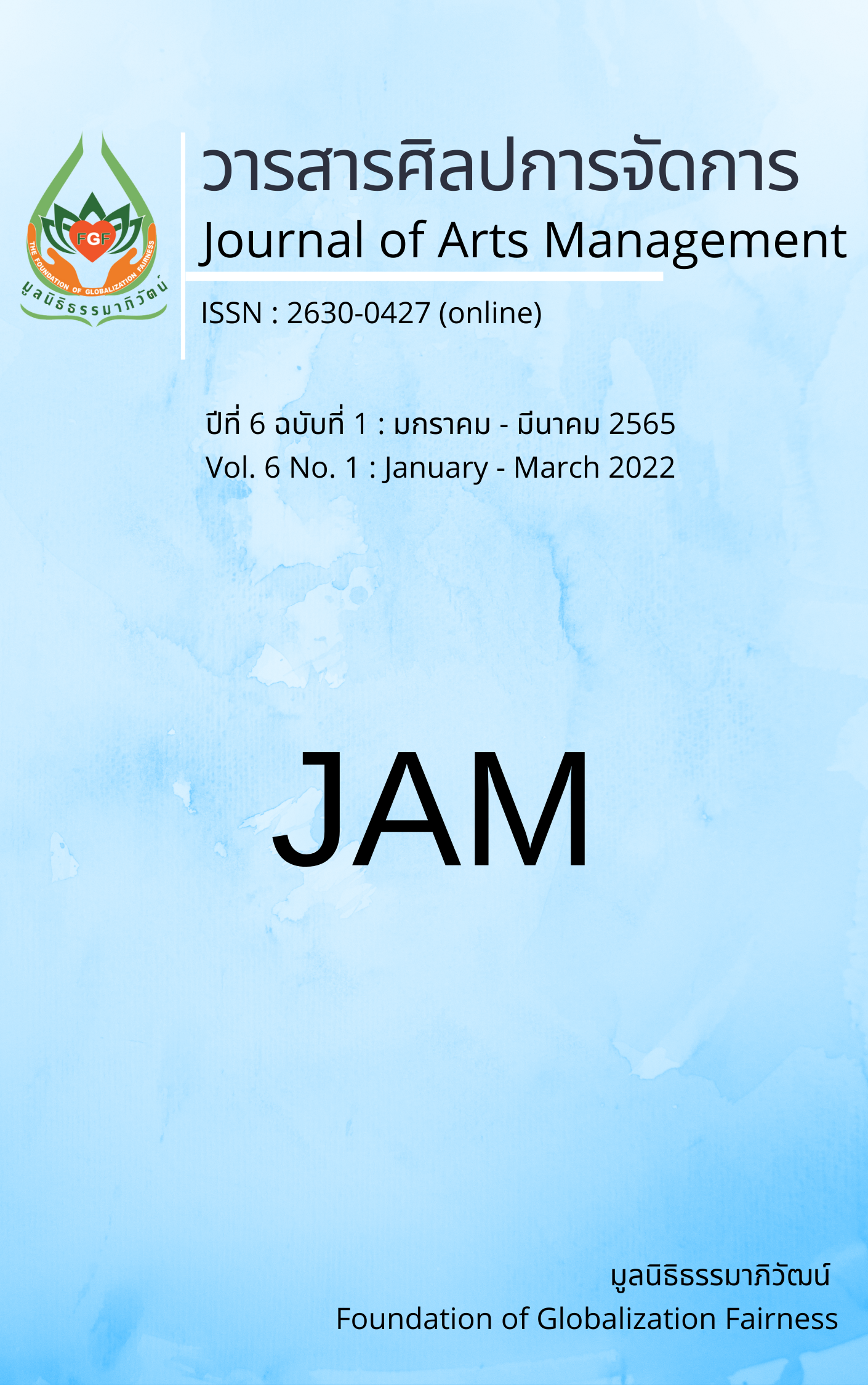Forecasting Models of Community Biodegradable Waste Management
Main Article Content
Abstract
This research objection on the data collection of the organic waste amount was produced from 2016 until 2019, through 4 years, the unit is in kilograms. The organic waste is divided into 2 categories, which are fruit peel and food waste, at the center of organic management, generating bio-fermented water to supply the gardens of KU campus and green schools with Vertical Recycled Box (VRB) in Bangkok city. The organic waste data were analyzed using correlation and forecasting statistics, as well as statistical numerical modeling. Pearson’s correlation in this research is a technique to measure the correlation between interesting data, but not causation. The forecasting techniques of this research are the moving average, the weight moving average, the simple exponential smoothing, the Holt’s exponential smoothing. The amount of organic waste that was produced from 2016 until 2019. There are four forecasting techniques, which are 1) Moving Average k=3, 2) Weight Moving Average k=3, 3) Simple Exponential Smoothing, and 4) Holt’s Exponential Smoothing. All the techniques seem to be similar from March until December of 2020 due to the amount of food waste in the year 2018 until early 2019 being stable. But in January and February of 2020, the Moving Average was calculated from the past 3 years of data, and in January of 2016, the amount of food waste was extremely high at almost 1,200 kilograms, which had an effect on the forecasting value in January of 2020. The research result benefits from Pearson’s correlation and the forecasting techniques of this research with the moving average, the weight moving average, the simple exponential smoothing, and Holt’s exponential smoothing can be used to prepare for what will happen in the future, gain valuable insight, and the result from prediction methods could decrease the cost of environmental management of organic waste.
Article Details

This work is licensed under a Creative Commons Attribution-NonCommercial-NoDerivatives 4.0 International License.
Views and opinions appearing in articles in the Journal of Arts of Management It is the responsibility of the author of the article. and does not constitute the view and responsibility of the editorial team I agree that the article is copyright of the Arts and Management Journal.
References
Amritha, P. K., & Kumar, P. A. (2019). Productive landscapes as a sustainable organic waste management option in urban areas. Springer, 21(2), 709-726. DOI: 10.1007/s10668-017-0056-0
Billah, B., King, M. L., Snyder, R. D., & Koehler, A. B. (1985). Exponential smoothing model selection for forecasting. International Journal of Forecasting, 22(2), 239-247. DOI:10.1016/j.ijforecast.2005.08.002
Brown, R.G. (1963). Smoothing, Forecasting and Prediction of Discrete Time Series. Prentice-Hall.
Collins, M. (2017). Organic waste: Management strategies, Environmental impact and emerging regulations. Nova Science Publishers.
Devadula, S., Gurumoorthy. B., & Chakrabarti, A. (2015). Design for sustainability: Case of designing an urban household organic waste management system. Current Science, 109(9), 1622-1629.
Holt, C. C. (1957). Forecasting Seasonals and Trends by Exponentially Weighted Moving Averages. ONR Memorandum, Vol. 52, Carnegie Institute of Technology, University of Texas, Austin.
Kaszycki, P., Głodniok, M., & Petryszak, P. (2021). Towards a bio-based circular economy in organic waste management and wastewater treatment – The Polish perspective. New Biotechnology. 61(4)} 80-89. DOI:10.1016/j.nbt.2020.11.005
Kirch, W. (2008). Pearson’s correlation coefficient. (eds). Encyclopedia of Public Health. Springer.
Oncioiu, I., Căpuşneanu, S., Topor, D. L., Petrescu, M., Petrescu, A-G., & Toader, M. I. (2020). The effective management of organic waste policy in Albania. Energies, 13(16), 4217. https://doi.org/10.3390/en13164217
Raza, S. T., Bo, Z., Ali, Z., & Liang, T. J. (2019). Vermicomposting by Eisenia fetida is a sustainable and eco-friendly technology for better nutrient recovery and organic waste management in upland areas of China. Pakistan Journal of Zoology, 51(3), 1027 1034.
Seabold, S., & Perktold, J. (2010). Statsmodels: Econometric and statistical modeling with python. In 9th Python in Science Conference, 92-96. DOI: 10.25080/Majora-92bf1922-011
Shukor, J. A., Omar, M. F., Kasim, M. M., Jamaludin, M. H., & Naim, M. A. (2019). Assessment of composting technologies for organic waste management. International Journal of Technology, 9(8), 1579-1587. DOI: https://doi.org/10.14716/ijtech.v9i8.2754
Thomsen, M., Romeo, D., Caro, D., Seghetta, M., & Cong, R.-G. (2018). Environmental-economic analysis of integrated organic waste and wastewater management systems: A case study from Aarhus city (Denmark). Sustainability, 10(10), 3742. DOI:10.3390/su10103742
Oktiawan, W., Wardhana, I. W., Sutrisno, E., Gorat, D., & Rizaldianto, A. R. (2019). Municipal solid waste management using bioreactor landfill in the treatment of organic waste from Jatibarang Landfill, Semarang-Indonesia. E3S Web of Conferences, 125.


